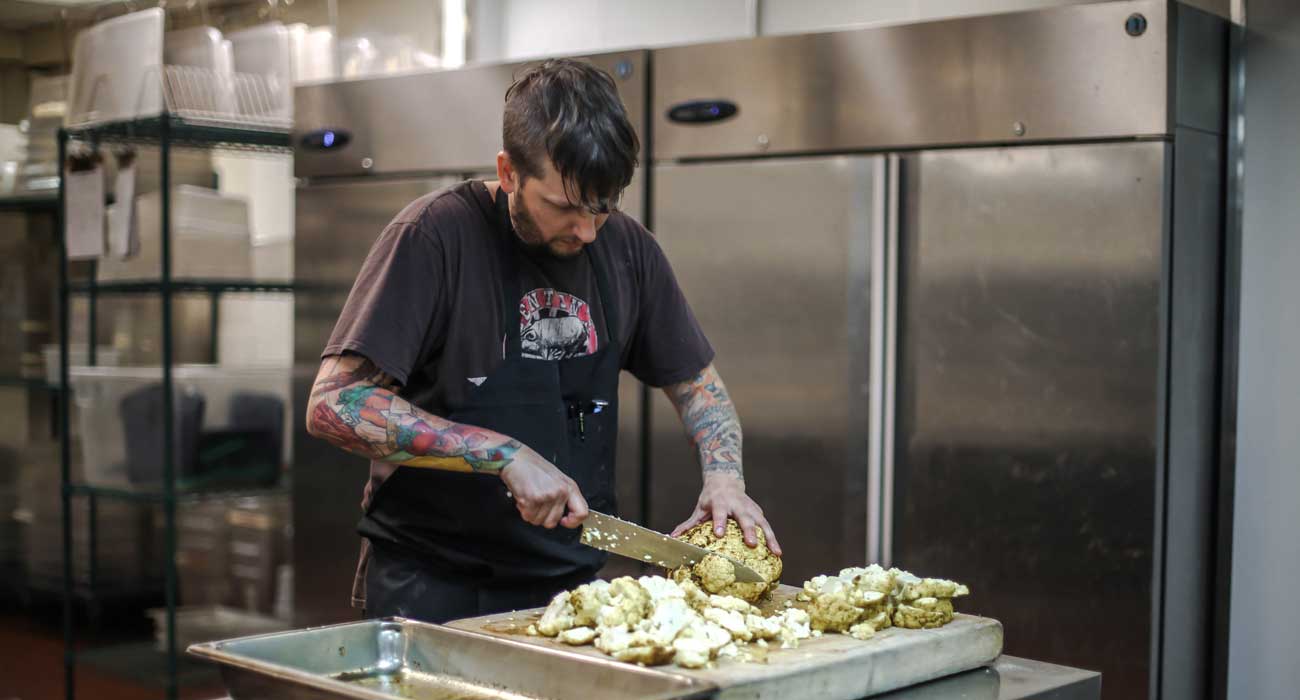A few years ago, I read a restaurant survey that ranked customer’s priorities when dining out. The study listed food, service, atmosphere, and location. The results were a little surprising to me in some areas.
Restaurant patrons in that survey listed “service” as their number one priority. Atmosphere came in second, food third, and location brought up the rear. That is the opposite of what the textbooks listed when I received an undergraduate degree in this field (years ago in the days just before the Civil War). Back then I was taught that it was all about “location, location, location.”
As a matter of fact, the first time I ever remember hearing the “location, location, location” business axiom was from one of my Hospitality Management professors. It’s been so long ago— pre-1861 you’ll remember— that I can’t remember his name. He was a grizzled old restaurant veteran who always smelled like vodka and usually looked as if he had just picked his clothes up out of a pile in the corner of his bedroom. He would stare his students down through bloodshot eyes and bark out, “The key to the restaurant business is location, location, location.”
The professor had been chewed up and spit out by the restaurant biz back in the days before the Food Network and dozens of other cable programs deceptively glamorized this profession. Though he did have a leg up as an instructor as he had worked, and even owned, restaurants. It wasn’t theory to him. He had lived it. It had kicked his ass, and he had landed in a university classroom in Hattiesburg, Mississippi.
I learned a lot from that professor, though I completely disagree with him on his most foundational principle— the key to success in the restaurant business is not, “location, location, location.” No. In my opinion, the key to long-term success in this business is management, management, management. I have always believed that poor management can kill a good location. But good management can save a bad location.
In our companies, all of our successes are directly related to managers following through on the systems that have been set up for them. It’s not me, not at all. It’s them. Though when we drop the ball, it can usually be traced back to a member of the management team in one way or another, or a poor executive decision on my part. If anyone ever asks about the key to my success— to the degree that there has been any success— in my 30-year restaurant career, I always give credit where credit is due— our management team. It’s not rocket science, it’s an easy formula for business success: Surround yourself with people who are smarter and more talented, set the course, define the goals, and then get out of their way.
“Management” was not one of the options on the aforementioned survey. The fact that the survey rankings list “service” first and foremost, doesn’t really surprise me. After being in this business for almost four decades, I know that customers value service. Many have had a long day and don’t want to lift a finger in their home kitchen or at the table. They want to be served. They want to be pampered, and they should be. It’s been my experience that the dining public always talks about service before they discuss food. We put a heavy emphasis in all of our companies on server training, and it makes a difference. Service can make, or break, the dining experience. The server is sometimes the only contact a customer has with a restaurant staff. Though if we’re doing our job in our full-service restaurants, the server is one of three people at the point of contact. The greeter is first, the server is second, and a manager (remember management, management, management) should always check on the table at least once after the entrée has been delivered.
The survey responders chose atmosphere second. This explains the success of a lot of the theme restaurants out there. Some— not all— theme restaurants are all style over substance. Food came in a lowly third on that survey, and that is where I differ greatly from those polled. For me, food comes first.
I will drive out of my way to a remote location, sit in a dark, cheaply decorated “divey” room and put up with mediocre service if the food is great. To me, It’s all about the food. I spent seven years as a server during my long and storied antebellum college career. As long as I know the server is trying as hard as he or she can, I can overlook most timing issues. Rudeness or indifference I won’t tolerate, but as long as someone is giving their best effort to deliver my food hot, and in a timely manner, I am fine. I don’t have a strong need to be “waited on,” but I do appreciate the finer points of fine dining service, and am always amazed when dining out in New York, at the level of attention to every minute detail in the service experience that is on display up there. Even still, I’ll be just as happy in a dive bar in New York if the food is first rate.
From an operational standpoint, food is the most difficult component to “pull off.” One can spend enough money to make the atmosphere appealing and attractive. Money cures the location situation, too. Though locations change. When we opened our first restaurant in 1987, we were on the edge of town. These days the town has moved farther west and we are now centrally located.
Service is becoming more of a challenge these days, but that is why there has been a decade long boon in fast casual and limited-service dining. For a full-service restaurant, it takes a lot of innovative training with a lot of one-on-one time early on, to pull off first-rate service, successfully. It takes a good talent pool, too, and we have been blessed to do business in a college town.
To thrive in the food segment of the restaurant world takes a collection of talent and dedication. It’s not just recipes, it’s the people. We have had chefs leave and go to our competitors with most of our recipes stashed in their back pocket as they walked out the back door. The problem with that, is that once those recipes have played out (and they will), there is no one in the competitor’s kitchen to create new recipes. We are an open book at our restaurants. I have published most of our recipes in cookbooks over the years— the full recipes, no deletions. The challenge for our competitors who use those recipes is to keep the quality up for years, decades even— and to keep coming up with more.
When it comes to food, it’s all about the people— those who develop it, those who prep it, those who cook it, and those who serve it. All four are important. That is just as true today as it was in my antebellum college days.
Onward.



